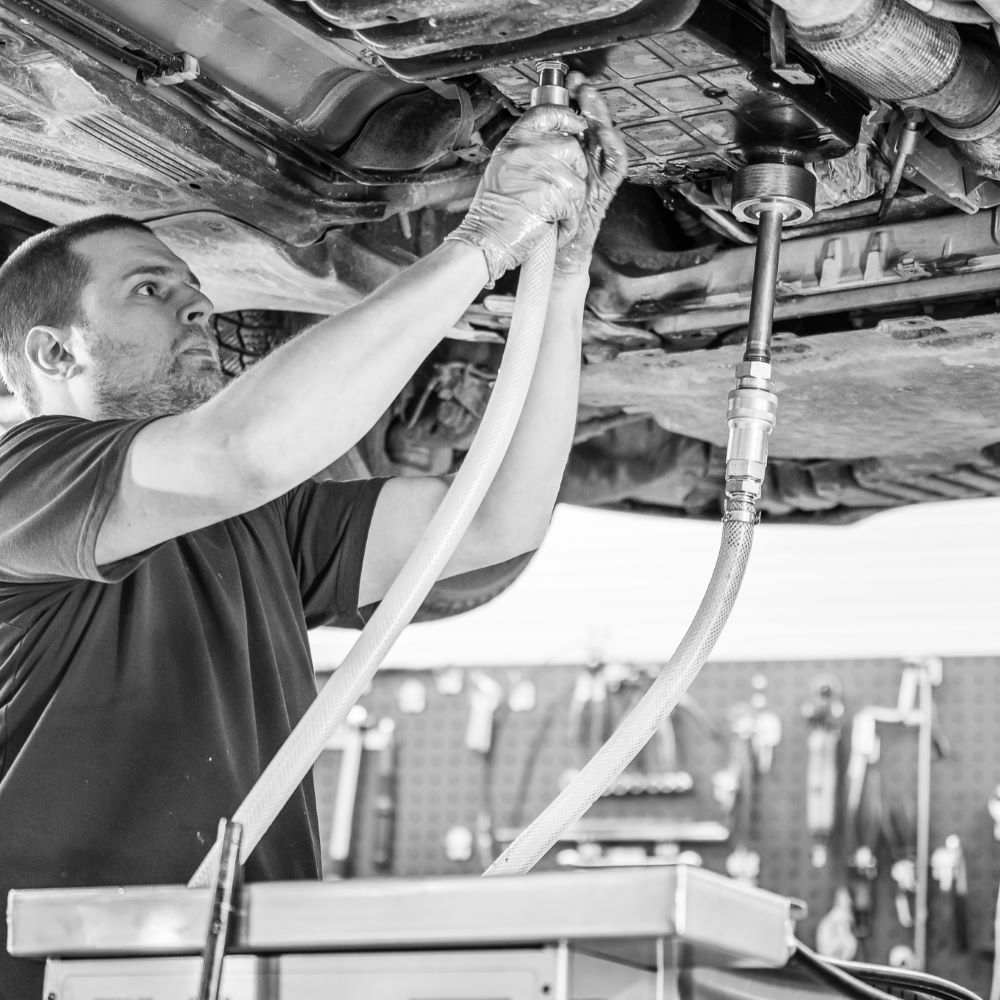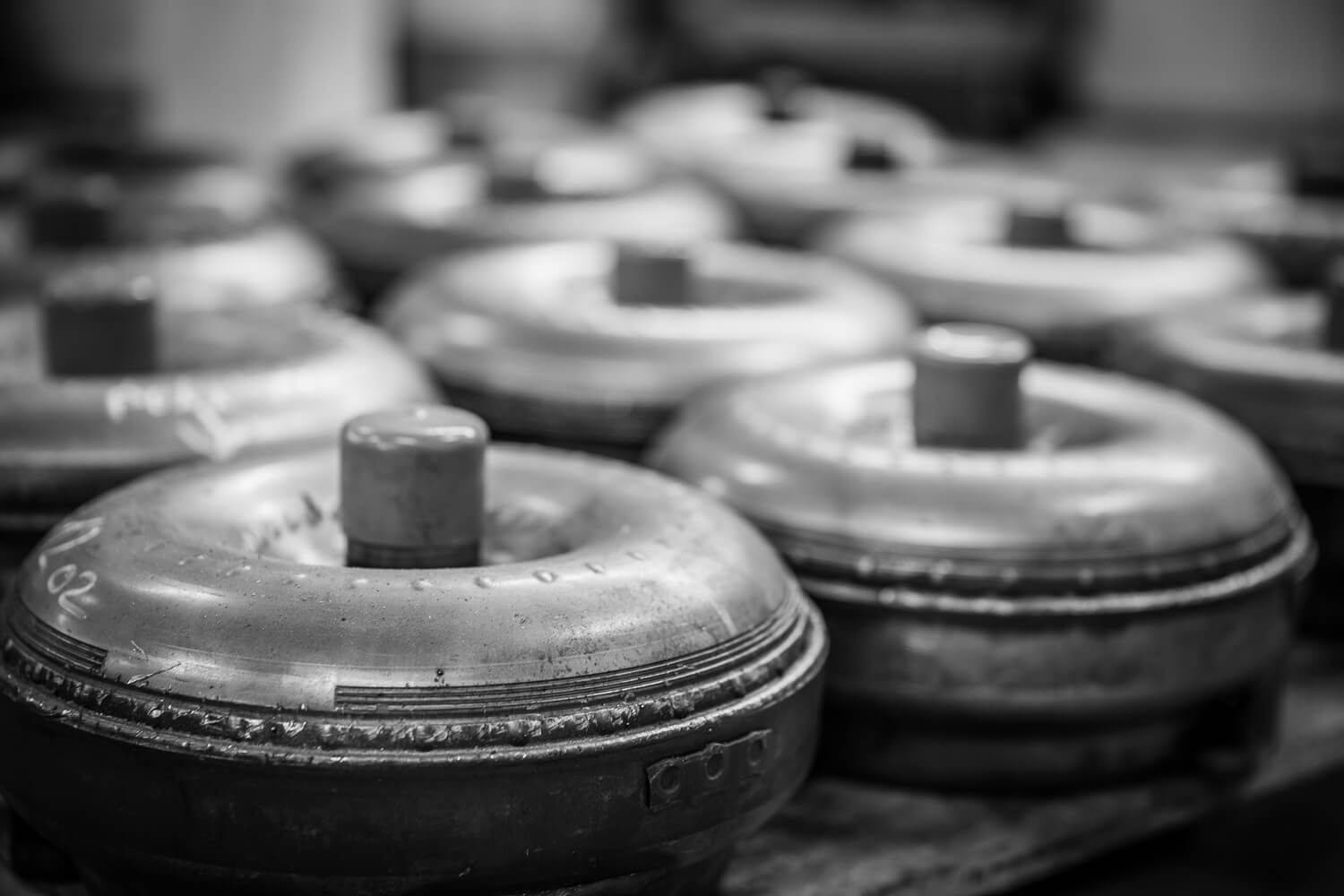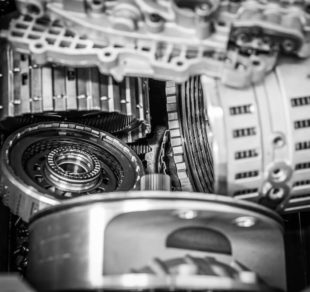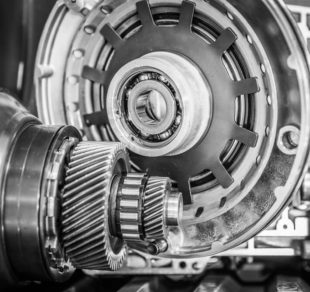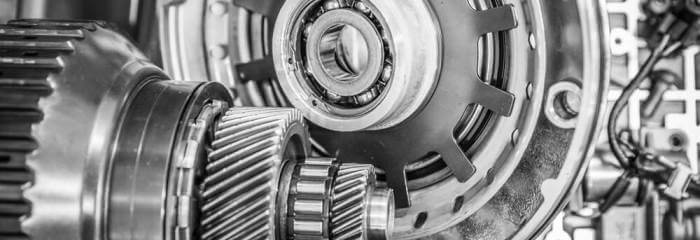
In short, an automatic transmission maintenance is important because the oil inside will be used up. It may sound strange, but when you read on, you’ll find out what happens to the transmission oil. After that, there’s nothing strange about this for you and maybe you are even going to think about your car’s transmission maintenance.
Anyway. Once you have read our previous posts, you know that transmission oil is not so much as an oil as a technical fluid, (the abbreviation ATF is used), which consists of base oil and other substances that are added to it in a significant amount.
It has several tasks: to lubricate, transfer power, act as a hydraulic oil, protect metal surfaces from oxidation, cool, be binder between clutch discs, clean, protect seals from hardening, etc. We wrote a more detailed story of the tasks of the transmission fluid in this post. If the oil is no longer able to perform one of these tasks, it will in turn render the performance of other tasks worse.
Friction number or friction factor
We used the term “wear out” above. This is indeed the case, because it is a high-tech product that loses its capabilities at high temperatures over time; its chemical composition changes and worsens. Which features change faster and slower, depends on the user, transmission type, and the environment.
One important parameter, which change is also felt to a regular user at the time of the gearchange – whether the gearchange is soft or not – is the friction number i.e. friction factor of the oil. We have written more about the friction factor in this post: What is the Friction Factor of the automatic transmission.
It is important that the friction number depends not only on the oil, but also on the material of the clutch discs and the transmission software. That is why it is extremely important that the transmission is fitted with oil with the characteristics of the transmission’s own materials and control systems. The same transmission that is under BMW or Audi uses, for example, a different oil and the reason lies in the software that controls the transmission. In one case, it is considered that an ultra-thin oil is used, in another case it is not.
That’s why it is not wise to use universal oils in a transmission. Don’t do that.
Contamination of the oil
Another and actually more important factor is oil contamination with different abrasive particles. The transmission, unfortunately, consumes steel, aluminum and bronze dust, and also the cladding of the clutch discs (very similar to cotton fibers) – all in all all a transmission is made of.
The main task of the transmission’s oil filter is to prevent larger pieces from entering the control systems a.k.a. hydraulic block. A magnet is used to filter the metal dust, but in the event of heavy wear, it will not be able to hold the entire metal dust, aluminum and bronze dust will move freely around the transmission and will be deposited.
The more there is an abrasive, the more the transmission will wear and tear, i.e. it will create more abrasive with a circular process. There is a risk that the filter will clog in the event of high dirt, which in turn will result in a drop in pressure in the transmission, the consequences of which are catastrophic to the health of the transmission.
Humidity getting into the transmission
The third trouble that is affecting the oil in the automatic transmission is that the humidity gets in the transmission. The transmission is not a hermetic unit – its temperature rises during operation and the air is forced out. Every time the car is conked out, about half a liter of moist air is sucked into the car by cooling down the transmission, which worsens the properties of the oil. This is particularly important for short journeys where moisture cannot escape from the transmission. In the long run, humidity has a significant effect on the steel parts of the transmission.
High temperature
We left the description of the biggest influencer of the transmission characteristics for last. That is a high temperature. The operating temperature of the transmission is usually 80-90° C, but in difficult conditions or in hot days in urban traffic, the temperature can rise even more than 120° C. If you think that the temperature never rises so high in your peaceful driving style, then it is not quite like that. In the case of gear shifting, there is an instantaneous increase in the oil temperature between the clutch discs – so the oil will also wear out with a calm driving style.
It is known that the degree of oxidation of carbohydrates is increased about two times for every 10 C when the temperature is above 80° C and as a rule of thumb the oil life is shortened twice by every 20° C over 80° C. The oil turns brown and starts smelling like there is a fire. At 120° C, the temperature also affects the rubber seals, reducing their elasticity, which in turn means possible leaks and pressure losses in the system.
Because of the heat, the accessories in the transmission oil change that make it a really worthy commodity. As temperatures rises, complex molecules are shorter and therefore the chemical composition of the oil changes over time. While the temperature is damaging to the properties of the oil, the varnish-like substance appears in the oil and is deposited on high-precision internal surfaces of the control unit (e.g. sticky solenoids) and gear shifting deteriorates further. For the driver, “frying out” means that the gear shift is already felt and is not soft.
Both Mercedes-Benz and Audi engineers have struggled with this problem. There was a problem with the Merces 7 and Audi 6-speed transmission, where in light gear change there was a jerk. This problem was treated with software upgrade and a newer oil type, which is more resistant to temperature and is also more slippery from the start i.e. with lower friction factor.
The transmission oil is cooled, usually a liquid-liquid heat exchanger is used. This means that the engine coolant cools the transmission oil when they meet in the same radiator, being in a separate section (essentially a radiator in the radiator).
Thus, malfunctions in the engine cooling system (low fluid level, poor coolant pump, faulty thermostat, contaminated radiator, etc.) also cause a rise in gearbox temperature. In addition, the internal contamination of the transmission’s heat exchanger itself should not be underestimated. This is important and in some cases the refrigeration kit requires to be refurbishing. Certain types of transmissions already have a too small cooler (VW Transporter, more powerful VW Passat, Nissan Pathfinder, etc.) placed in the factory.
There’s probably no need to add more. It is more than clear that there is nothing left in the air and the oil of the automatic transmission is aging like any other thing. In order for your transmission to be in good health, you should take care of it.




